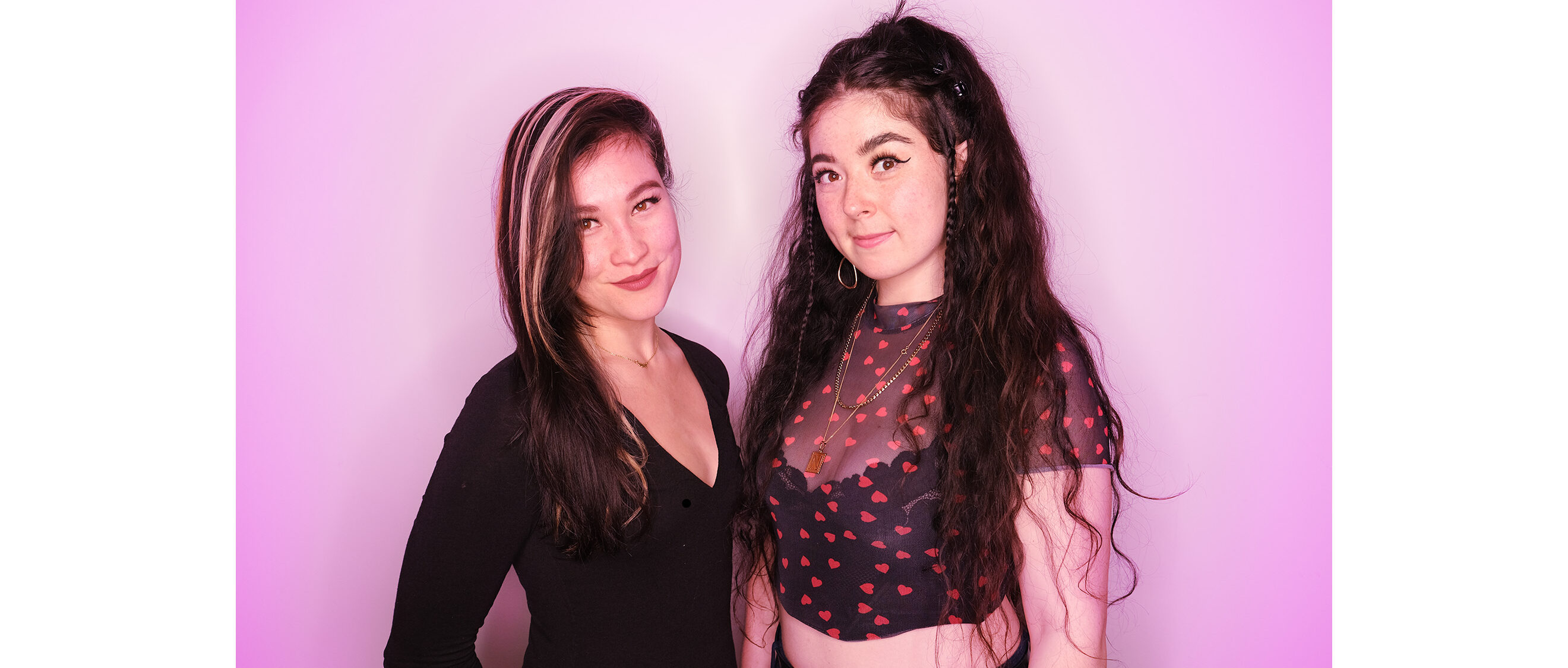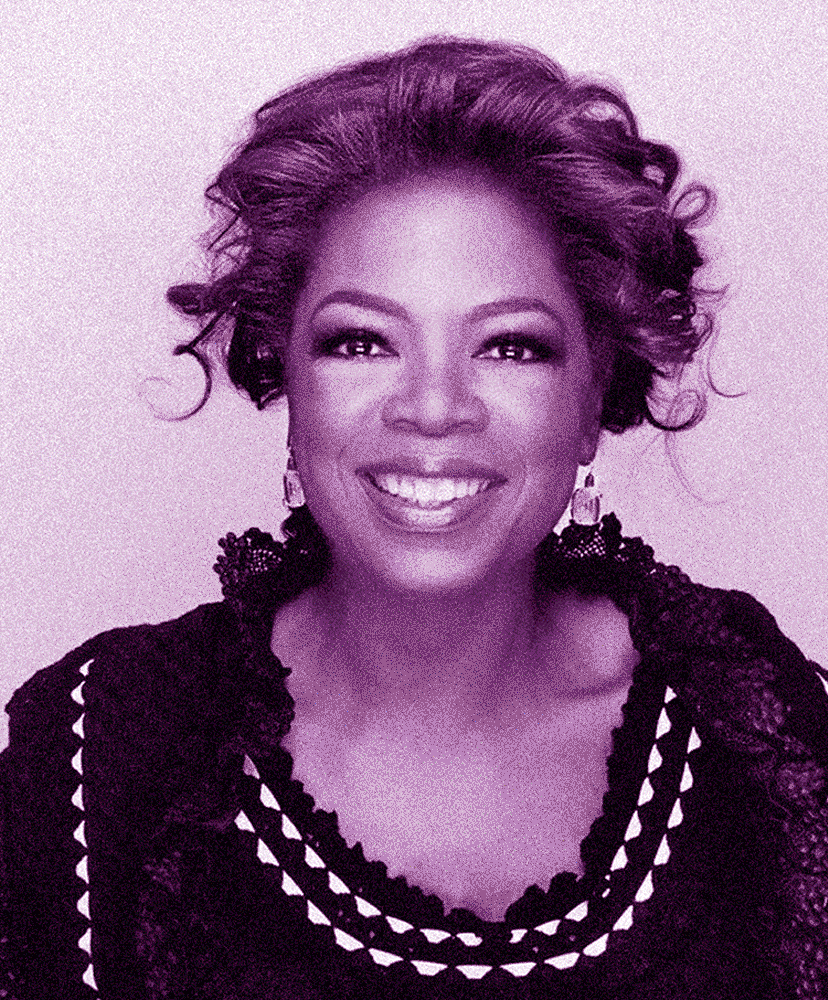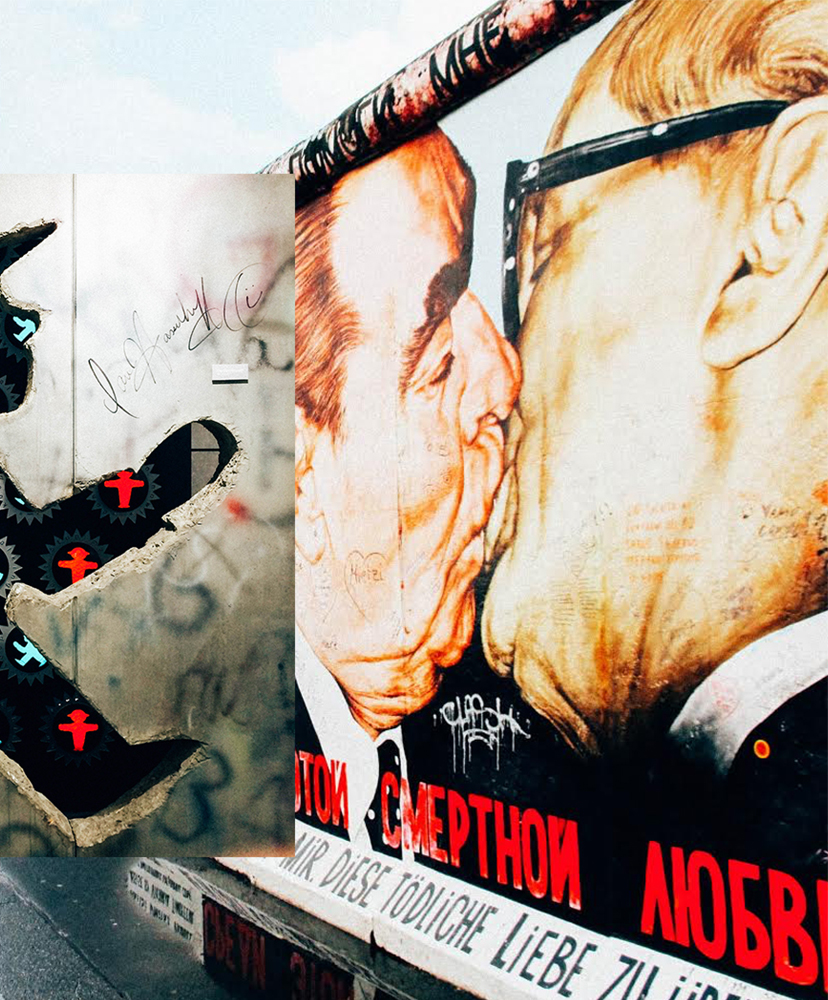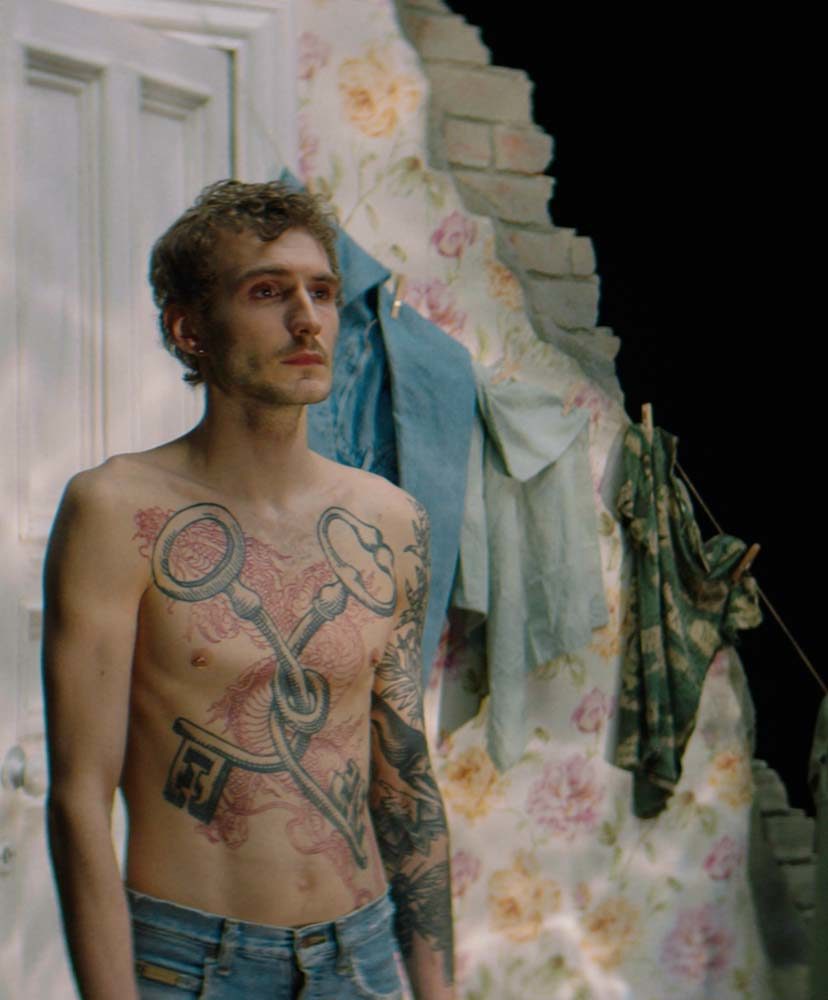Personal Project: The Flush
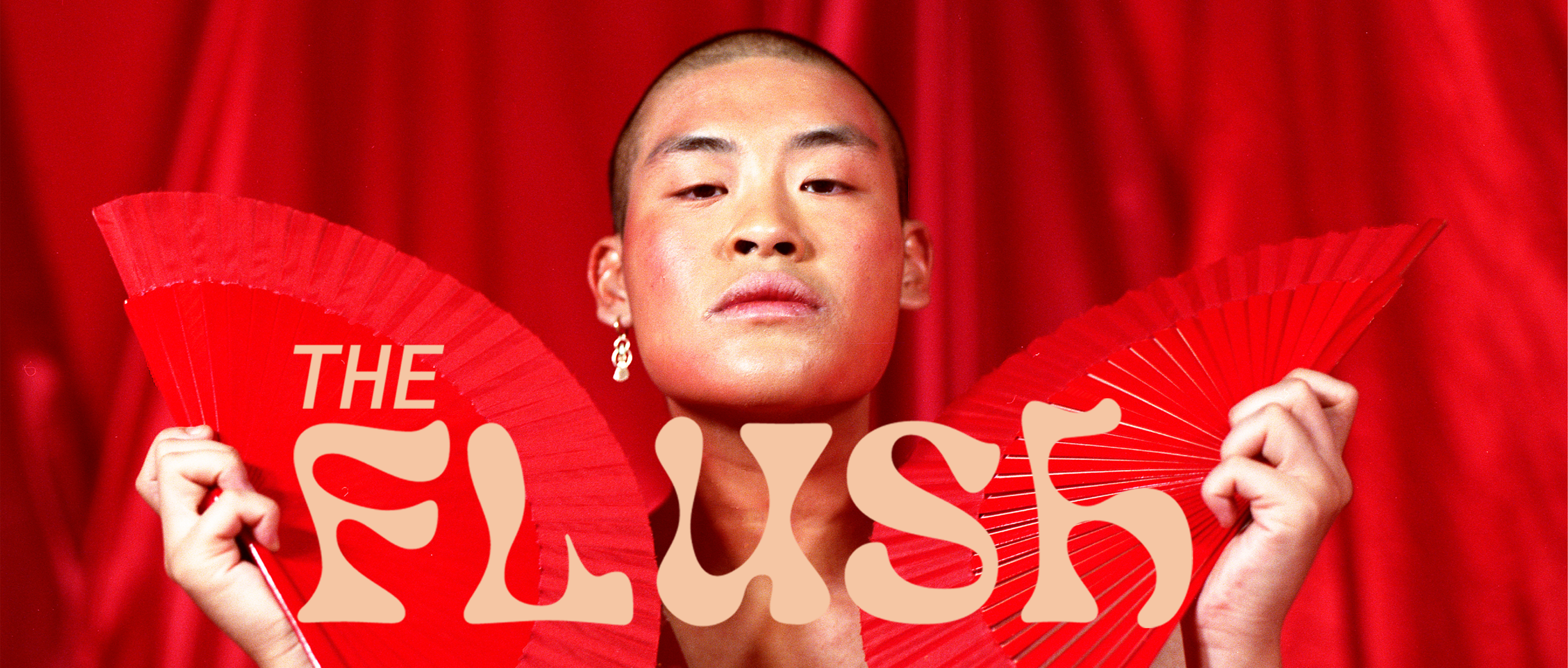
An allergic reaction caused by a missing enzyme can lead to red spots on the body and face, bloodshot eyes and a general feeling of discomfort for many people who experience these symptoms of the flush, after consuming alcohol.
Photographers Naomi He-Ji and Jowi Len (also a Copywriter at W+K Ams) noticed how people of Asian descent, including themselves, experience what is often called the ‘Asian’ flush.
There is surprisingly very little discourse and visual representation which exists around this topic, which is exactly the reason why they wanted to bring more attention to it. They view themselves and their work as ‘bridges’ between the wider Eurasian experience and focus on themes such as, (cultural) identity, sexuality and freedom of expression.
Their work is on show as nine portraits at “The Flush” on Spotify. in Rotterdam (17 Sep – 20 Oct 2022) and as podcasts titled “The Flush” on Spotify.
We caught up with them to find out more…
1. How did this project start?
We were sitting in a park, having lunch, trying our best to come up with an idea for our next project. Like always, our serious conversation soon turned into a recollection of silly stories.
During one of them we started laughing about how funny it would be if we would take pictures of our drunk, red faces. Once we managed to stop laughing, we realized that this was a stupidly great idea, one we both resonated with on a deeper level.
Growing up in The Netherlands where drinking alcohol is an unofficial rite of passage into adulthood, we both felt as though we never really fit the image of a typical Dutch teenager. Being cross-cultural with an Asian/European heritage meant that we could blend into each culture respectively but never completely. There would always be something about us which was different. Turning red during social events where alcohol was part of being cool and blending in also didn’t really help with this feeling.
After doing a bit of research, it was clear that the flush doesn’t get much attention for how prominent it can be. We saw the link between the growing call for more nuanced (South) East Asian representation and addressing this issue through our sometimes quirky frame of reference.
2. How would you two describe ‘The Flush’?
The Flush project is a portrait and podcast series which captures an allergic reaction experienced by people of (South) East Asian descent. It aims to proudly show the very visible allergy through photographs of affected areas and within podcasts where people openly and intimately talk about their flush experiences.
We want to break open the stigma around this issue, we believe it’s important to understand what the allergy means to us and take back a bit of power by owning the way it looks.
We’ve heard stories of shame and fear when it comes to talking about this reaction, even within circles of family and friends, nobody wants to lose face or admit that they can’t ‘hold their liquor’ (it’s true, we really can’t, we literally miss a gene which breaks down the alcohol). We shouldn’t have to suffer in silence and feel isolated or ashamed whenever we choose to turn down a drink.
The wide spectrum of Asian identities and experiences are not always as visible. With ‘The Flush’ we wanted to give voice and imagery to something very personal without making it feel too heavy or loaded, we want to say “Here We Are!” you can learn with and about us through the lens of our experiences.
In order to achieve this we found it important to work with an intersectional approach when choosing our models, representing a wider spectrum of different (South) East Asian experiences.
3. How have you worked toward intersectionality with The Flush project?
We wanted to create honest, authentic representations of each of our models. We also felt that within this representation we wanted to highlight individuals who might not fall into the category of what many people in The Netherlands typically perceive (South) East Asian people to look like. This image is generally one of a non-threatening, non-disabled, skinny, young, binary and homogeneous person.
Our portraits include people who are of different ages (all within the legal drinking age of course), people of different sizes, who identify outside the gender binary, people who show skin and tattoos, who are cross-cultural or of mixed-race, people who do or do not drink.
As much as we tried to cater to the widest of spectrums we also recognize that we weren’t able to include a visibly disabled person so there is still always room for leveling up and improving our platform in the future.
4. How do the podcast and photo series cohabit in one space?
Initially we thought we’d have the podcasts playing on headphones next to our portraits, but then we realized that only a very small group of people actually take the time to listen to long audio recordings. We then decided for the podcast to live on Spotify so our portraits could soak up all the attention. Encouraging visitors to listen to the conversations on Spotify before or as they enter the space for the full experience.
Our nine portraits live in an area at Het Nieuwe Instituut decorated with three 30 meter long red carpets. The 1 by 1.30 meter portraits hang from the ceiling in zig-zag fashion and the entrance banner is made out of see-through red plexiglass with a short description of ‘The Flush’ and our podcast QR code.
5. The (Asian) Flush spurs on conversation around race, identity and culture. How did those topics surface through the process of making the portraits?
Honestly, we consistently deal with these topics in our day to day life. It’s normal for us to occupy a space of cultural liminality, an in-betweenness which will forever be part of our identity. Because these topics do not feel foreign to us, at first, it didn’t make sense to go about explaining them. However, during our initial conversations we realized how many shared experiences we had. It surprised us because we rarely encounter others who can relate to our specific Eurasian, cross-cultural frame of reference.
This got us thinking, perhaps our podcasts could bring these themes to light through the lens of the flush. It turned out to be an easy process, we never sat down and talked through how we would discuss the subjects of race, identity and culture. They are subjects that naturally occur, perhaps because of who we are. It often feels as though we walk around as this giant human cultural question mark. Others often don’t know where to place us which in turn makes us question and want to figure out where we fit in.
During our podcast interviews we asked our models about how their family reacts to the flush, this question often brought up conversations about how alcohol is perceived between and within different cultures. The themes seamlessly flowed throughout our talks, sometimes touching on heavier topics and other times as amusing memories.
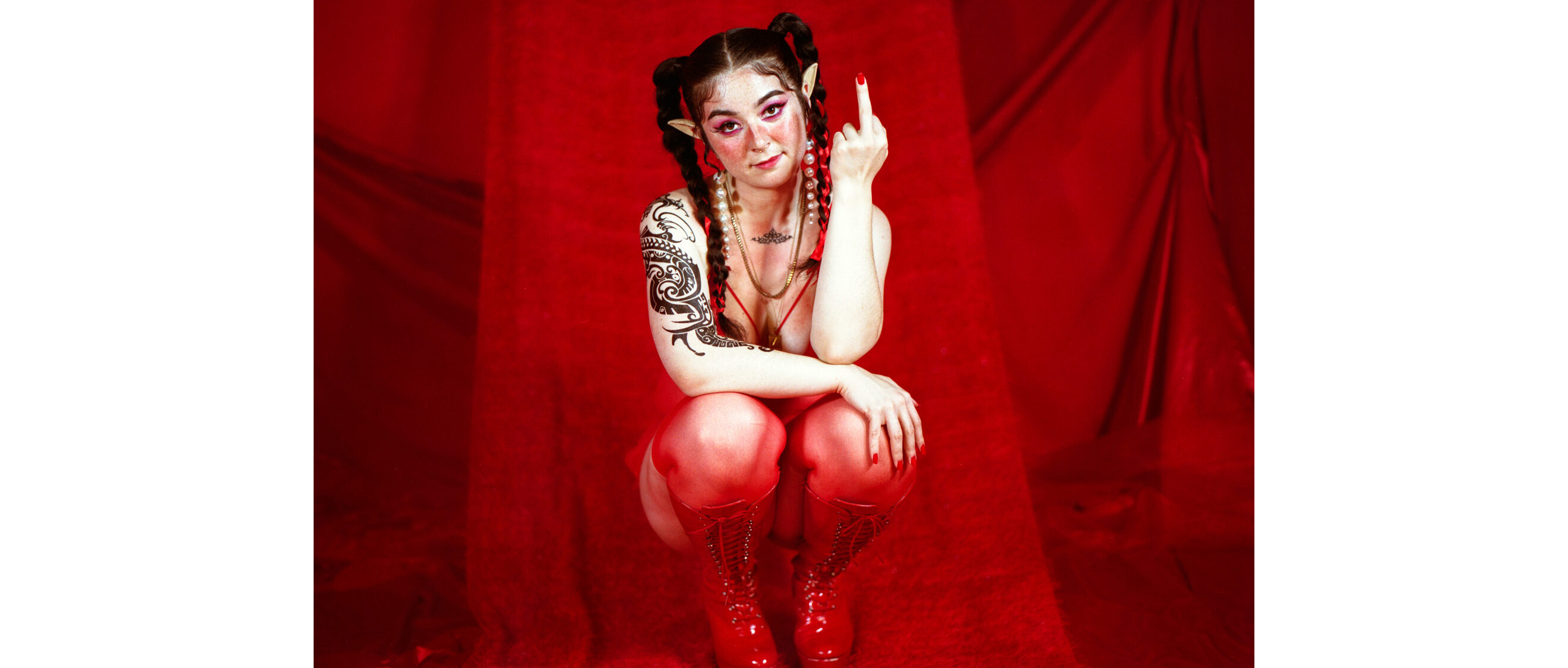
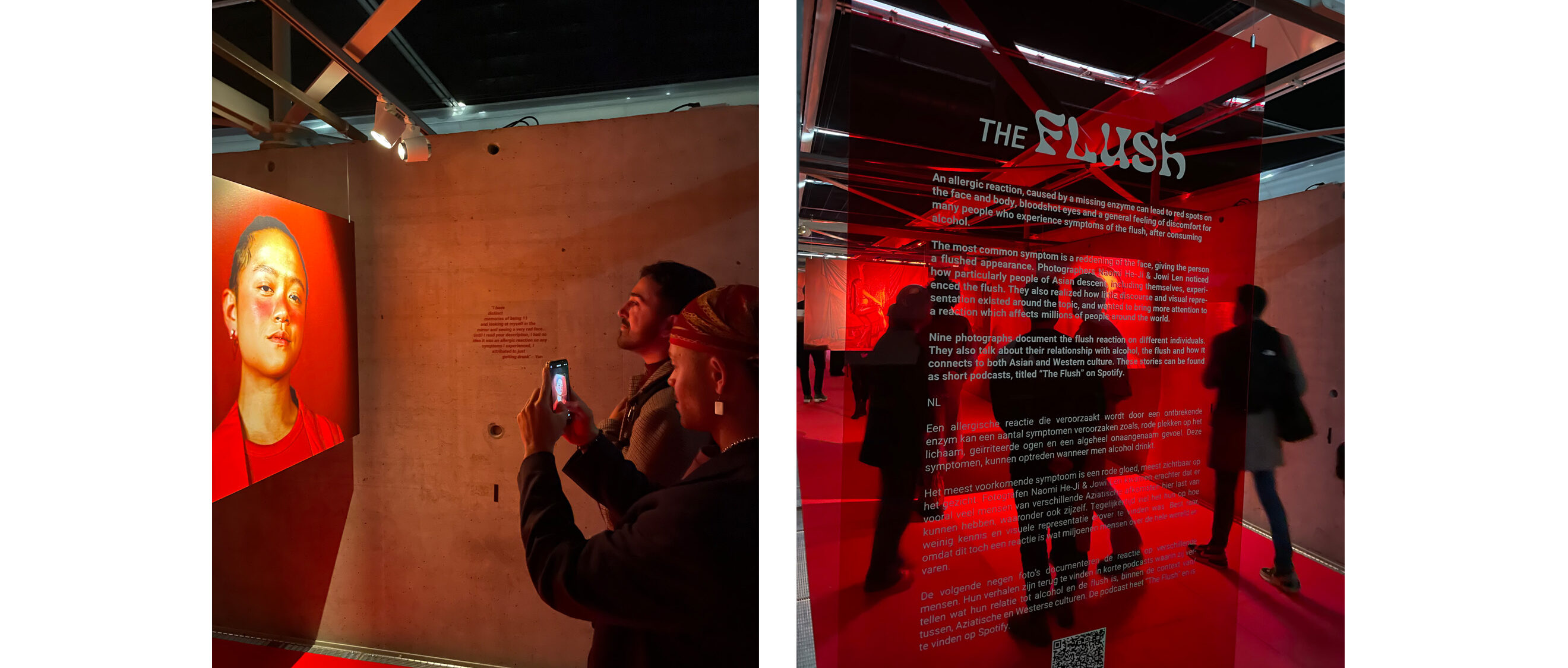
6. Why do you think there hasn’t been much attention/conversation around this allergic reaction before?
During our podcast interviews, we asked our models this question as well and it was interesting to hear that no one had a clear answer. At first we presumed it was shame that kept people from talking about their flush. We then heard stories about how in different parts of (South) East Asia it was quite normal to see everyone at an event turn red, if everyone has it and it’s not ‘special’ do we need to talk about it?
We still don’t understand why this topic hasn’t had much attention, for something which is so impactful and sometimes even quite dangerous, why aren’t we being educated about it? Or at least, discussing why we get it and the long-term effects it might have on our bodies.
This is one of the main reasons why we started ‘The Flush’ project, we wanted to create space for the topic to be discussed, in a way which feels empowering, fun and informative
7. As a participant-generated visual method applied to the study of a community. Have you considered writing in more depth about it?
The podcast conversations allowed us access to an intimate space, focussing on exploring personal experiences. After our talks we immediately photographed our models on set, keeping in mind what we had just discussed and how they wanted to be portrayed.
The outcomes of these portraits and conversations are specific to each model but represent a wide range of experiences within a Eurasian context. At this point we feel as though we’ve concluded a small part of our artistic research. We’ve only just breached the topic from a personal frame of reference.
There is a lot more work to be done unpacking the layers of complexities behind the flush, within different cultural contexts but for now, we are happy with the outcome and effects our series has made.
8. How did your partnership with Het Nieuwe Instituut begin?
Het Nieuwe Instituut is a cultural center focusing on architecture, design and digital culture in Rotterdam, The Netherlands.
During our funding and research fase, we labeled them as one of the institutions where we’d like to showcase our work. Their previous exhibitions include, DISRUPT_ A collection of digital art and NFT’s featuring 22 artists through a queer perspective and Touch’M, a film about non-sexual intimacy between men. We felt connected to the topics of these exhibitions and got in touch with the curator of Gallery 3.
9. We’re curious: did you ask the models the same questions?
Yes! We were curious to see whether the answers would be similar as we had very little knowledge of other people who experienced the flush.
We would go in depth with people who had more expertise dealing with certain topics or who’s stories were entertaining to listen to.
At the end of the day, it was eye-opening to hear about the similarities and differences between our models and it has changed how we view the flush as a much more diverse set of experiences
10. What comes next for you two and this project?
We have a bunch of common experiences, mostly surrounding our cross-cultural identity and could base our entire body of work on them as we continue to create in the future. For now, Naomi will be working on a portrait series about interracial couples and the difficulties they face when culturally integrating with each other’s families. Jowi will continue to work as a Copywriter in the W+K Amsterdam office while continuing her Spoken Word gigs.
We’re currently working on bringing ‘The Flush’ exhibition to other countries to create more discourse and awareness around the subject, Singapore in particular is of key interest!
